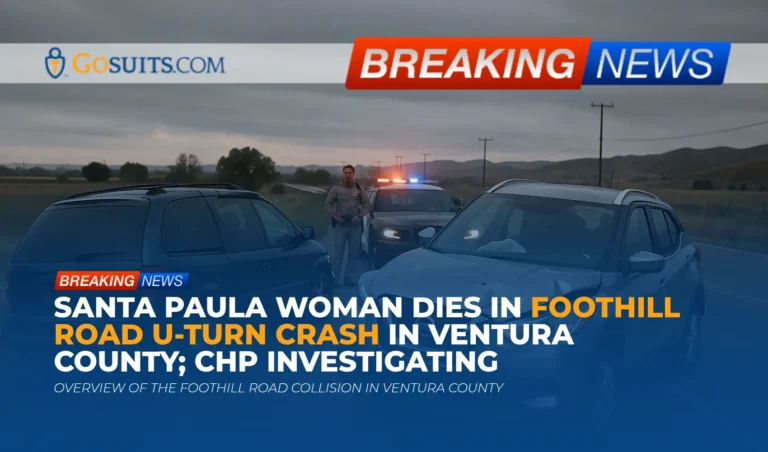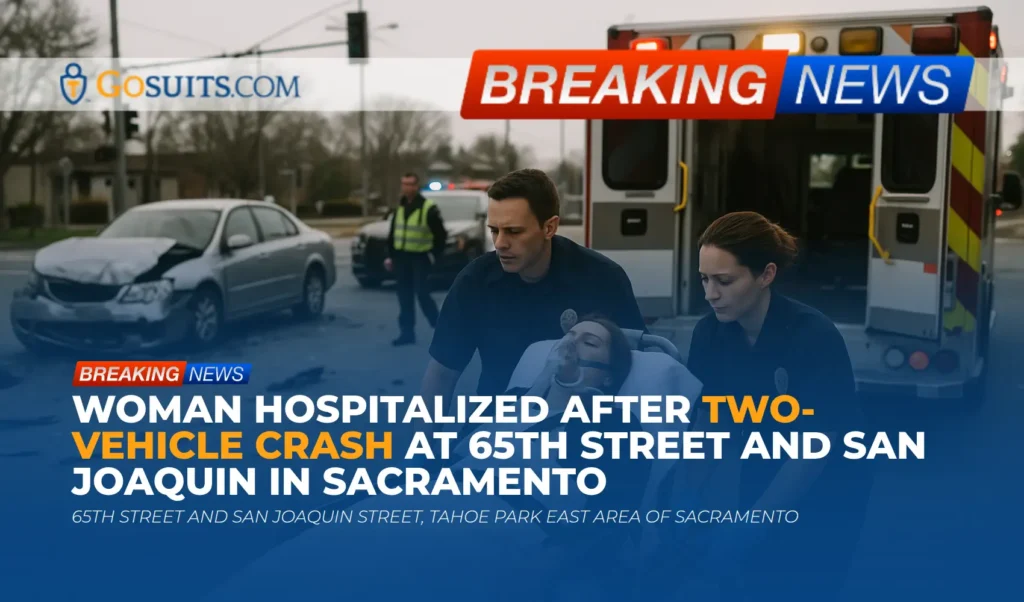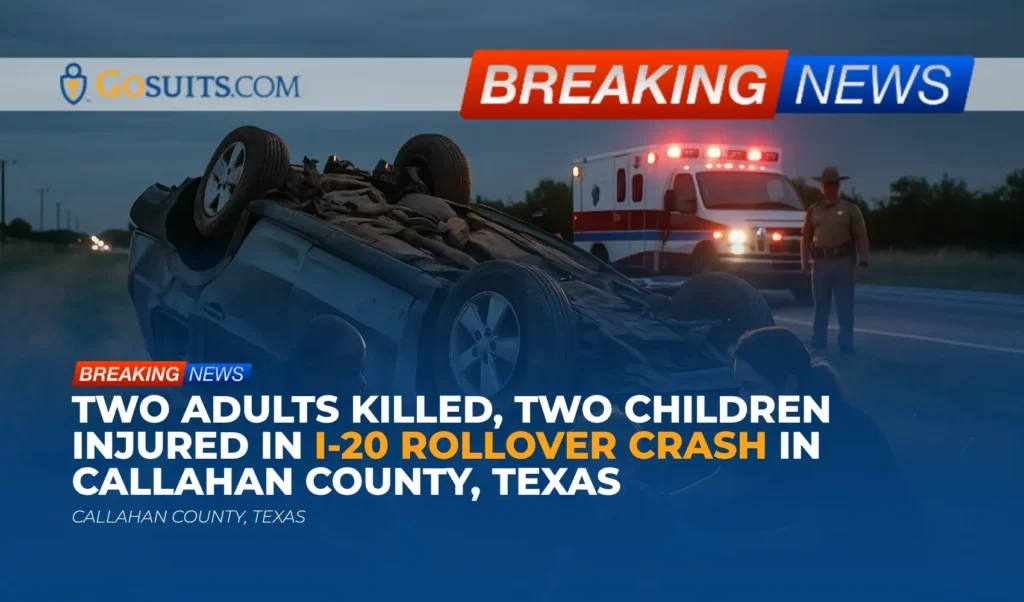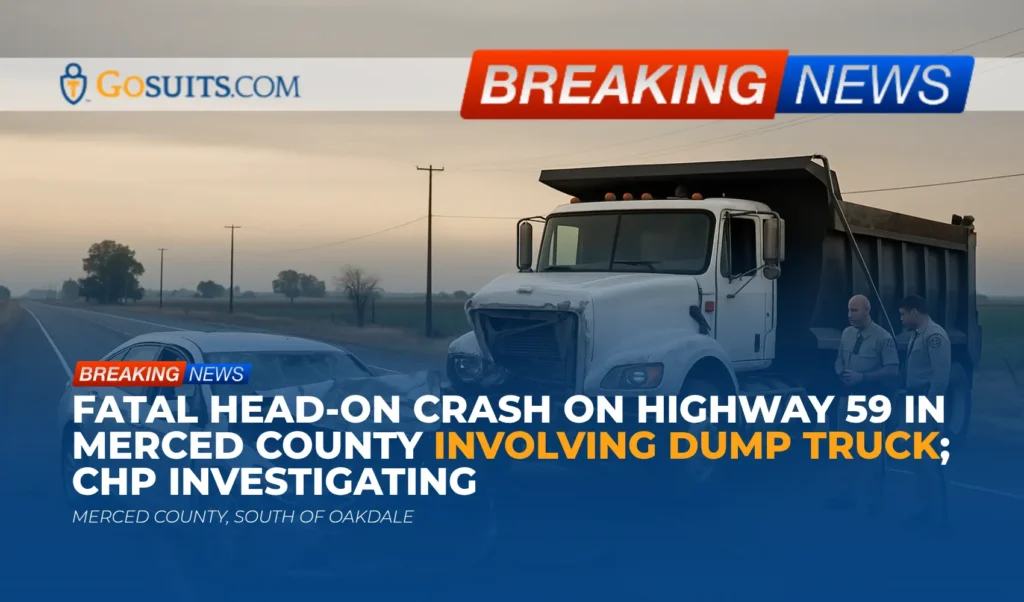- Overview of the Foothill Road collision in Ventura County
- What we know so far: timeline and roadway context
- Who was involved
- Official investigation status and where to share information
- Where families can obtain official records and help
- Legal context in California after a fatal two-vehicle crash
- Evidence that often matters in two-vehicle collisions
- Insurance considerations and early steps
- Roadway safety and relevant data
- Practical next steps for those impacted
- Why timely action matters and what to do now
- Commentary from Gosuits Ventura County, California Personal Injury Attorney
Overview of the Foothill Road collision in Ventura County
A two-vehicle collision along Foothill Road, east of Rancho Vista Lane in Ventura County, took the life of a 51-year-old woman from Santa Paula on Monday morning. According to details released by the California Highway Patrol Ventura Area office, a westbound 2000 Dodge Caravan was performing a U-turn when it was struck by a 2020 Nissan Kicks. The front of the Nissan impacted the left rear quarter panel of the Dodge, and both vehicles left the roadway after the collision. The driver of the Nissan died at the scene. The driver of the Dodge, age 24, remained on scene and cooperated with investigators. A 32-year-old passenger from the Dodge was transported to Ventura County Medical Center with minor injuries. At this time, CHP has stated that drugs or alcohol do not appear to be contributing factors. The investigation is ongoing.
We share this information with care and respect for all involved. Sudden roadway losses are devastating, and families are often left searching for clear answers amid grief and uncertainty. The information below organizes what is publicly known, outlines how investigations like this proceed, explains how key records can be obtained, and provides general legal context relevant to two-vehicle collisions in California.
What we know so far: timeline and roadway context
Based on the information made public by the California Highway Patrol Ventura Area Office:
- Date and time: Monday, October 6, at approximately 5:58 a.m.
- Location: Foothill Road, east of Rancho Vista Lane, Ventura County.
- Sequence: A Dodge Caravan traveling westbound initiated a U-turn. A Nissan Kicks traveling behind collided with the Dodge’s left rear quarter panel. Both vehicles departed the roadway.
- Injuries: The 51-year-old Nissan driver was pronounced deceased at the scene. The Dodge driver remained on scene, while a 32-year-old Dodge passenger was taken to Ventura County Medical Center with minor injuries.
- Indicators: CHP noted that, at this stage, alcohol and drugs do not appear to be involved. The investigation continues and additional findings may be released later.
Early morning conditions can include lower natural light and, at times, overcast skies that may affect contrast and visibility. Regardless of conditions, investigators will assess whether roadway design, sight lines, traffic controls, vehicle lighting, vehicle speed, and driver decision-making had any role. At this stage, no determination of fault has been announced.
Who was involved
The collision involved two vehicles and three known individuals:
- Nissan Kicks: Driven by a 51-year-old woman from Santa Paula, who died at the scene.
- Dodge Caravan: Driven by a 24-year-old who remained at the scene and cooperated with CHP.
- Dodge passenger: A 32-year-old passenger transported to Ventura County Medical Center with minor injuries.
Identities are typically released by local authorities after next of kin notifications. While basic facts are public, additional personal details are often withheld to protect privacy.
Official investigation status and where to share information
CHP is actively investigating. Witness statements, roadway evidence, and any available video footage are crucial. If you saw the collision, observed vehicle movements beforehand, or possess dash camera footage from that morning along Foothill Road near Rancho Vista Lane, CHP asks that you share that information.
CHP Ventura Area Office contact: 805-662-2640.
When reporting information, note the date, time, location, vehicle descriptions, and anything you recall about lane positions or maneuvers. Even small details can help reconstruct precise sequences.
Where families can obtain official records and help
Collision report from the California Highway Patrol
Collision reports are generally available to involved parties or their legal representatives. CHP provides instructions for requesting a report, including who is eligible and how to submit forms, on its official website. See: CHP: Request a Collision Report.
Requesting parties typically need the date, time, location, and report number if known. If you do not have a report number, CHP can often locate the report by date and location details.
Autopsy and coroner records
In fatal incidents, the county medical examiner or coroner reviews the cause and manner of death. Next of kin can usually request copies of certain records after the case is complete. In Ventura County, the medical examiner’s office manages this process. Families can contact the county’s medical examiner or coroner for timelines, available documents, and any fees. If you are uncertain which office to call, CHP or the hospital may provide the correct contact information for the county office that handled the case.
Availability of autopsy reports, toxicology, and related documents may vary based on the status of the investigation and California confidentiality rules.
Death certificates and certified copies
Death certificates are issued through county vital records, with statewide oversight by the California Department of Public Health. Guidance on obtaining certified copies is available here: California Department of Public Health: Vital Records.
Certified copies are often needed for insurance, estate matters, and other official processes. Requesters may need to provide proof of relationship and complete a sworn statement.
DMV accident reporting obligations
California requires drivers to report a traffic collision to the DMV within 10 days if there was any injury or death, or if property damage exceeded a statutory threshold. This is done using the SR-1 form. Information and the form are here: California DMV: Report of Traffic Accident SR-1.
Submitting the SR-1 is separate from a police or CHP report. For those unsure whether they must file, it is sensible to review the DMV guidance or consult with a qualified attorney for clarity before filing.
Legal context in California after a fatal two-vehicle crash
Every collision is fact specific. Below are general California principles that are often relevant in crashes involving turning movements and rear impacts. These are not conclusions about this incident, but a framework for understanding how fault and responsibility may be analyzed.
Turning or making a U-turn requires reasonable safety
California law requires that drivers not turn a vehicle from a direct course until the movement can be made with reasonable safety, and only after signaling appropriately. See Vehicle Code section 22107.
Investigators typically evaluate whether a driver attempting a U-turn had adequate time and distance, sufficient visibility, and whether the maneuver complied with any posted controls or restrictions.

Following distance and speed
Drivers must not follow another vehicle more closely than is reasonable and prudent, considering speed, traffic, and roadway conditions. See Vehicle Code section 21703.
Even where a lead vehicle makes a maneuver, investigators will consider the following driver’s speed, lookout, and reaction time in light of the conditions.
Comparative fault may apply
California uses comparative fault principles. If more than one party’s negligence contributes to a collision, each may bear a proportionate share of responsibility. The Judicial Council’s civil jury instruction on comparative fault is available at Judicial Council of California CACI 405.
In two-vehicle crashes involving a U-turn and a following vehicle, analysis often considers both the safety of the turning maneuver and whether the approaching driver maintained a prudent speed and distance.
Wrongful death and survival actions
After a fatal crash, California law allows certain family members to bring a wrongful death claim. Eligibility and procedures are addressed in the Code of Civil Procedure. See CCP section 377.60.
A separate survival action may allow the decedent’s estate to pursue certain claims the decedent could have brought, if death had not occurred. See CCP section 377.30.
Deadlines to file
In many California personal injury and wrongful death matters, the general statute of limitations is two years from the date of injury or death. See CCP section 335.1. Certain claims may have shorter deadlines, and there are exceptions and tolling rules that can apply in specific circumstances.
Claims involving public entities and roadway conditions
If a claim potentially involves a public entity, such as alleged dangerous roadway conditions, a prompt government claim is typically required before filing a lawsuit. In California, the presentment deadline is often six months from the date of the incident for personal injury or death claims. See Government Code section 911.2.
Liability for dangerous conditions of public property is governed by statute, including standards for proving notice and causation. See Government Code section 835.
Evidence that often matters in two-vehicle collisions
Thorough investigations examine a range of physical and digital evidence. Some or all of the following may be relevant:
- Scene measurements and mapping: Skid marks, yaw marks, final rest positions, debris fields, and roadway friction can inform speed and angles of impact.
- Vehicle damage profiles: Crush patterns, paint transfer, and deformation help reconstruct sequence and relative positions at impact.
- Event Data Recorder (EDR) downloads: Many vehicles store pre-crash data such as speed, brake application, throttle position, and seat belt status. Preserving the vehicles promptly can be crucial to secure this data.
- Lighting and visibility: Time of day, sun angle, cloud cover, and artificial lighting are considered alongside headlight or taillight functionality.
- Traffic controls: Presence and visibility of lane markings, signage, and any U-turn restrictions.
- Witness statements: Independent witnesses and any dash camera video can corroborate or clarify movements immediately before the crash.
- Injury documentation: Medical records and, in fatal cases, medical examiner findings help correlate injury patterns with collision dynamics.
- Cell phone and telematics data: Where lawfully obtained, can help determine distraction or vehicle operation parameters.
- Roadway design and maintenance: Sight lines, grade, shoulder condition, and vegetation management may be reviewed in cases where roadway environment is questioned.
Preserving vehicles and requesting that insurers avoid premature disposal can be critical for maintaining access to EDR data and thorough inspections.
Insurance considerations and early steps
Insurance companies move quickly to evaluate exposure after serious collisions. Communications are often recorded, and statements can be used later in claim evaluations. Before contacting any insurance carrier, it is prudent to consult an attorney to understand rights and obligations. What someone shares with an adjuster can be cited out of context and may affect liability allocations or coverage assessments.
General considerations include:
- Do not speculate about fault: Limit statements to verifiable facts. Avoid accepting blame or assigning it to others before the investigation is complete.
- Direct communications through counsel: An attorney can coordinate with insurers and CHP to obtain documents while protecting the claimant’s rights.
- Preserve evidence: Send written preservation requests to involved insurers and any tow or storage yards so vehicles are not destroyed or released prematurely.
- Medical and funeral benefits: Auto and other policies may provide limited benefits for medical or funeral costs, depending on coverage. Review policies carefully with legal guidance.
- DMV and SR-1 filings: Ensure statutory reporting requirements are met. See DMV SR-1 guidance.
If the roadway environment or signage is questioned, it may be important to inspect and photograph the site promptly. Where a public entity could be implicated, short claim deadlines may apply under the Government Claims Act. See Gov. Code 911.2.
Roadway safety and relevant data
While each collision is unique, broader safety data can provide context for understanding risk factors on California roads:
- National trends: The National Highway Traffic Safety Administration has reported that recent years saw elevated roadway fatalities compared to pre-2020 levels, with early estimates indicating a modest decline in 2023 compared to 2022. See NHTSA’s summaries at NHTSA press releases and research pages on FARS.
- California statewide data: The California Office of Traffic Safety provides annual reports and county-level rankings that highlight collision trends by crash type, time of day, and contributing factors. See OTS Crash Rankings.
Turning movements, including U-turns, introduce complexity because they require gaps in traffic and clear visibility. Approaching drivers must also adjust speed and following distance to conditions and potential maneuvers ahead. These shared responsibilities are a core reason investigations look at both vehicles’ behavior, the roadway setting, and any environmental influences at the time of the crash.

Practical next steps for those impacted
After a serious crash, it can be hard to know where to begin. The steps below are intended as general information to help organize tasks and avoid common pitfalls:
- Obtain the CHP collision report: Use the instructions at CHP: Request a Collision Report. Confirm whether supplemental diagrams or photographs are available and how to request them.
- Contact the county medical examiner or coroner: Ask about the status of the case, the process for obtaining autopsy findings, and expected timelines. Request certified death certificates through county vital records, with statewide guidance at CDPH Vital Records.
- Preserve vehicles and data: If a vehicle is in a tow yard, promptly request in writing that it be preserved for inspection and that no downloads or repairs occur without notice.
- Collect documents: Gather insurance policies, registration, medical records, and any photographs or videos taken at or after the scene.
- Identify witnesses and video sources: Secure names and contact information for witnesses. Canvass for nearby cameras that may have captured approaches to the collision point.
- Be cautious with insurance communications: Before providing recorded statements, consult an attorney to understand implications. What is said can be used later in dispute over liability or damages.
- Track deadlines: Note potential statutes of limitations, including the two-year period under CCP 335.1, and consider shorter claim deadlines if any public entity might be involved, per Gov. Code 911.2.
Because each situation is different, customized guidance can help avoid missteps while critical evidence remains available.
Why timely action matters and what to do now
Acting promptly after a serious collision can preserve rights, protect evidence, and improve clarity for families and communities. The most impactful steps are concrete and time sensitive:
- Secure official records early: Request the CHP collision report and, when available, medical examiner documentation. Early access to accurate information reduces uncertainty and helps align next steps with facts.
- Protect physical evidence: Vehicles can be moved, repaired, or salvaged quickly. A written preservation request to insurers and storage facilities helps ensure key inspections and data downloads occur when they matter most.
- Document the scene and roadway: Photographs of markings, signage, sight lines, and lighting conditions are most accurate soon after the event, before changes occur due to weather, maintenance, or traffic.
- Coordinate communications: Insurance adjusters may seek recorded statements soon after a crash. Aligning communications through counsel helps ensure that statements are accurate, limited to known facts, and appropriately framed to avoid misinterpretation.
- Calendar legal deadlines: Many rights are time limited. Tracking deadlines under statutes like CCP 335.1 and, where applicable, the Government Claims Act, reduces the risk of losing claims due to timing rather than merits.
- Clarify insurance coverage: Review applicable auto, umbrella, and other potential coverages. Understanding available benefits, exclusions, and coordination of benefits helps prevent delays in essential expenses and planning.
Taking these steps now can improve the quality of the investigation, reduce later disputes over facts, and help ensure that decisions are built on reliable information.
Commentary from Gosuits Ventura County, California Personal Injury Attorney
Our hearts go out to everyone affected by the collision along Foothill Road. Losing a community member on a Monday morning commute is heartbreaking, and words will always feel incomplete in the face of such loss. This commentary is intended for general educational purposes, to help readers understand how incidents like this are typically examined and what information can be important moving forward.
From a civil injury perspective, investigations into a U-turn collision like this often focus on two parallel questions. First, whether the turning maneuver complied with California’s requirement that turns be made only when reasonably safe, with proper signaling, under Vehicle Code 22107. Second, whether the approaching driver maintained a prudent speed and following distance appropriate for the conditions and traffic, as reflected in Vehicle Code 21703. In many two-vehicle crashes, the law views responsibility through the lens of comparative fault, where each party’s conduct is assessed and allocated proportionally. The Judicial Council’s CACI 405 provides the framework used by courts and juries to evaluate that allocation.
Large insurers and corporate claim departments often move quickly to shape the narrative after a crash. Adjusters may ask for recorded statements or broad medical authorizations before families have full information. Early offers can come with limited context about future needs, and communications are sometimes framed in a way that narrows liability questions prematurely. These tactics can take advantage of the stress, grief, and lack of familiarity many people have with the process. Thoughtful guidance helps ensure that facts are developed through official records, physical evidence, and careful analysis, not just through the lens of a single insurance file.
In circumstances like this, a free consultation can be important. It provides a confidential setting to understand timelines, what records to request, how to preserve vehicles and electronic data, and when and how to communicate with insurers. It also helps clarify whether additional parties or roadway factors should be evaluated, and how short deadlines under the Government Claims Act may apply in limited scenarios. While nothing can undo the loss, early, informed steps can protect rights and support a more complete and accurate understanding of what happened.
Helpful official resources referenced above:
- California Highway Patrol: Request a Collision Report
- California DMV: Report of Traffic Accident SR-1
- California Department of Public Health: Vital Records
- California Vehicle Code 22107
- California Vehicle Code 21703
- Judicial Council of California CACI 405 Comparative Fault
- CCP 377.60 Wrongful Death
- CCP 377.30 Survival Actions
- CCP 335.1 Statute of Limitations
- Government Code 911.2 Government Claims Act
- Government Code 835 Dangerous Condition of Public Property
- California Office of Traffic Safety: Crash Rankings
- NHTSA Press Releases and NHTSA FARS






